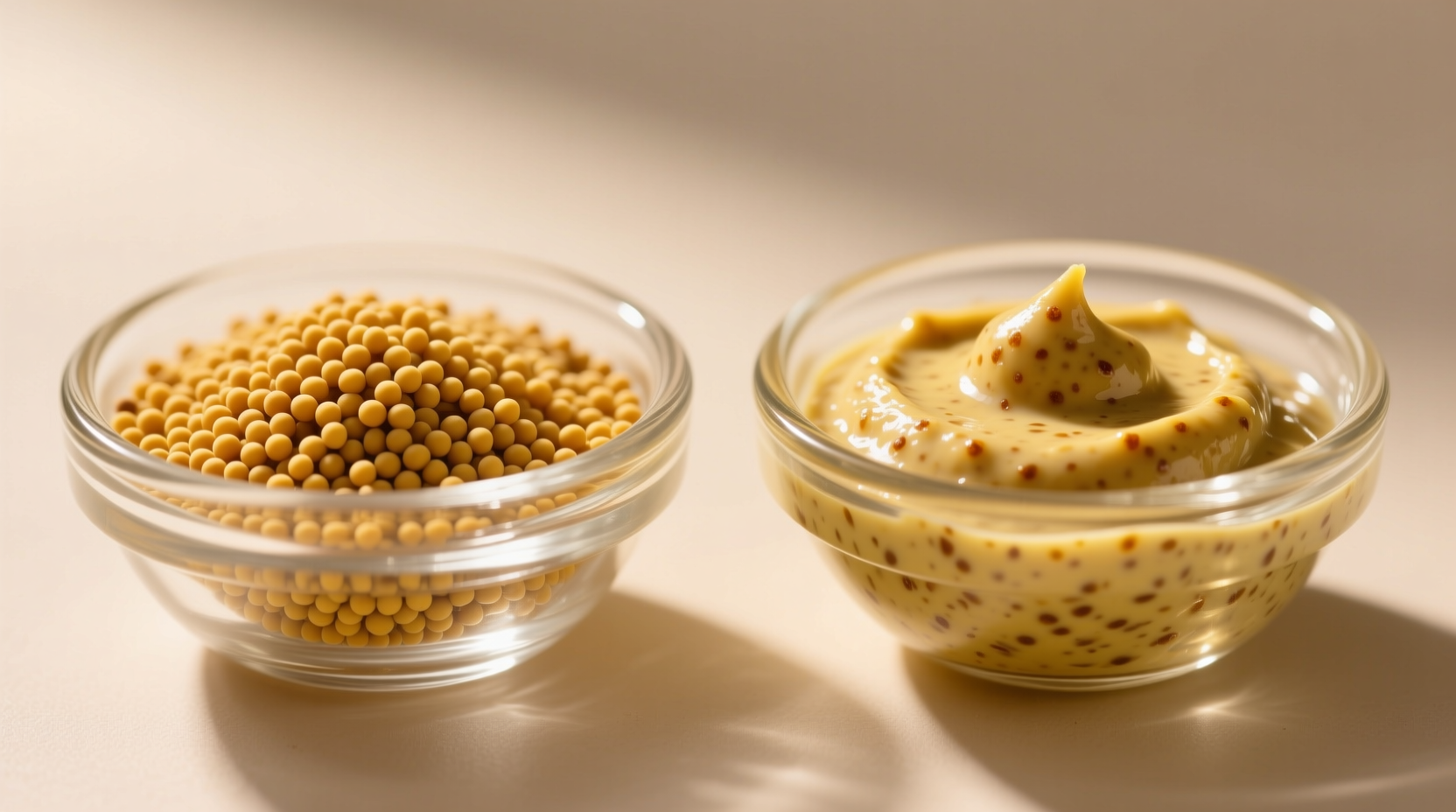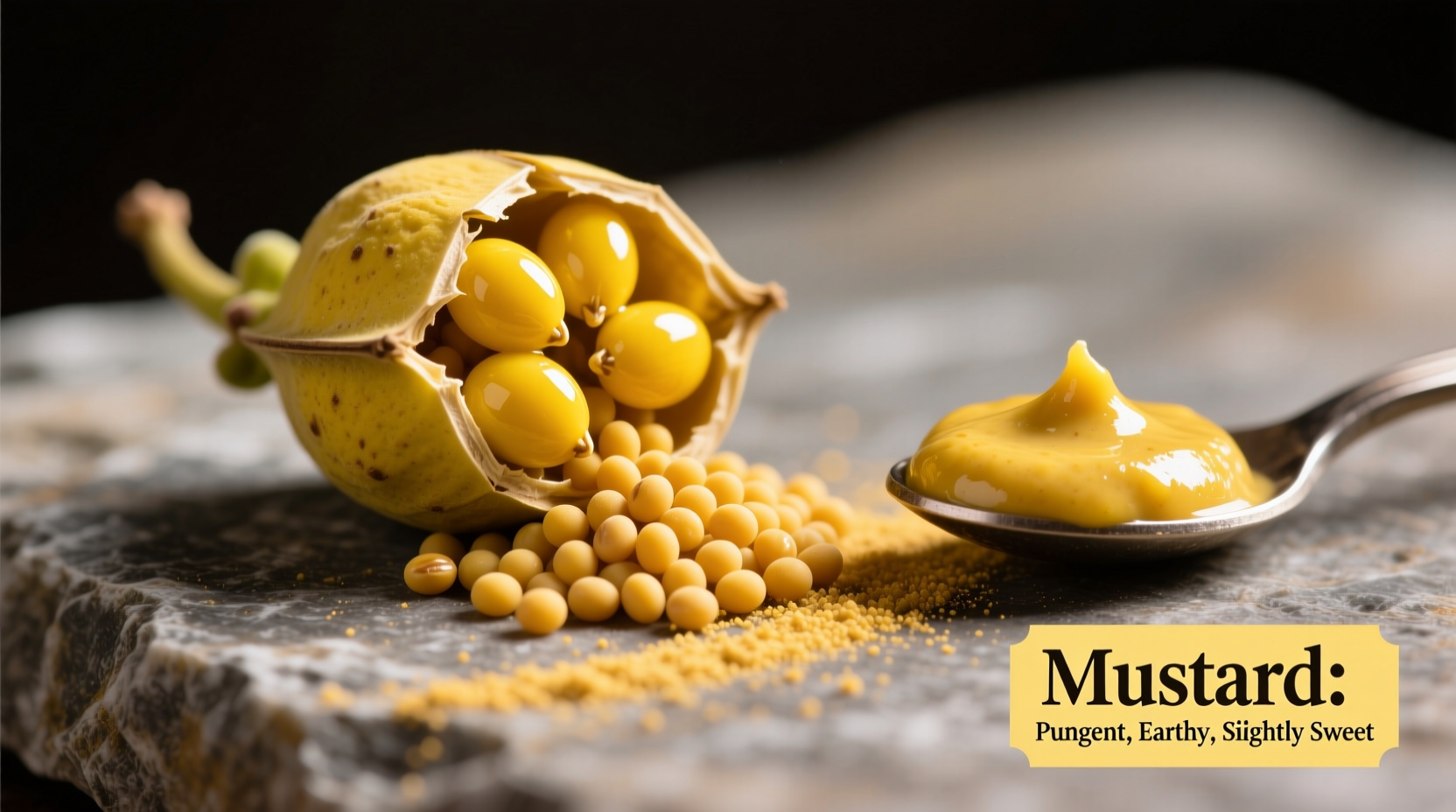Ever wondered why that hot dog or sandwich needs that perfect mustard kick? Understanding mustard's flavor profile transforms how you use this kitchen essential. As a culinary professional who's worked with mustard varieties from Dijon to regional French preparations, I've discovered how this ancient condiment's chemistry creates its signature bite—and how to harness it in your cooking.
The Core Flavor Components of Mustard
Mustard's unique taste emerges from three primary elements working in concert. First, the pungency that makes your nose tingle comes from allyl isothiocyanate—a compound released when mustard seeds' enzymes react with liquid. Second, the tangy acidity typically derives from vinegar or wine in the preparation. Third, earthy undertones vary based on mustard seed variety and additional ingredients like herbs or spices.
This chemical reaction explains why freshly prepared mustard intensifies in heat over 10-15 minutes before mellowing. The University of California, Davis Food Science Extension confirms that mustard's pungency peaks at 15 minutes after preparation then gradually diminishes as the volatile compounds dissipate.
Mustard Variety Flavor Comparison
| Mustard Type | Primary Seeds | Liquid Base | Flavor Profile | Best Culinary Uses |
|---|---|---|---|---|
| Yellow | White/yellow | Vinegar, water | Mild tang, slightly sweet, subtle heat | Hot dogs, burgers, potato salad |
| Dijon | Brown | White wine, vinegar | Sharp, complex, moderate heat, wine notes | Vinaigrettes, marinades, cream sauces |
| Whole Grain | Brown/yellow mix | Vinegar, wine | Rustic, earthy, textured, variable heat | Sandwiches, charcuterie, braises |
| Spicy Brown | Brown | Vinegar, spices | Robust, pronounced heat, bold tang | Reubens, sausages, pretzels |
The Science Behind Mustard's Signature Bite
Mustard's distinctive heat differs fundamentally from chili peppers. While capsaicin in peppers creates burning sensations on your tongue, mustard's pungency targets your nasal passages through sinigrin—a glucosinolate compound in mustard seeds. When seeds are crushed and mixed with liquid, the enzyme myrosinase converts sinigrin into allyl isothiocyanate, that familiar nose-tingling compound.
The American Chemical Society explains that this reaction varies based on pH: acidic liquids like vinegar create immediate but shorter-lasting heat, while neutral liquids like water produce slower-developing but longer-lasting pungency. This explains why Dijon mustard (made with wine) has more complex heat than yellow mustard (vinegar-based).

How Cooking Transforms Mustard Flavor
Many home cooks don't realize that heat dramatically alters mustard's flavor chemistry. When cooked, mustard's volatile pungent compounds evaporate, leaving behind its tangy acidity and earthy notes. This transformation creates two distinct usage scenarios:
- Raw application: Preserves maximum pungency for finishing dishes or as a condiment
- Cooked application: Mutes sharpness while enhancing tanginess for sauces and marinades
Professional chefs leverage this knowledge by adding mustard at different cooking stages. For emulsified sauces like béarnaise, they incorporate mustard early to benefit from its stabilizing properties without overwhelming heat. For finishing touches, they'll use raw mustard to provide that signature bite.
Contextual Boundaries: When Mustard Works Best
Not all mustards perform equally across culinary applications. Understanding these context boundaries prevents flavor mismatches:
- Fat-rich foods: Mustard's acidity cuts through richness in meats and cheeses (try Dijon with roast beef)
- Starchy bases: Yellow mustard complements potatoes and pretzels without overwhelming
- Delicate proteins: Mild mustards work with fish; avoid strong varieties that dominate
- Cooking temperature: High heat diminishes pungency—use raw for finishing
The Culinary Institute of America's research demonstrates that mustard's flavor compounds bind differently with various food matrices—explaining why it enhances some pairings while clashing with others.
Debunking Common Mustard Flavor Myths
Several misconceptions persist about mustard's taste profile:
- Myth: All mustards taste basically the same with minor variations
- Reality: Seed variety and preparation create fundamentally different flavor experiences
- Myth: Mustard's heat comes from added spices like horseradish
- Reality: The pungency is intrinsic to the seed-liquid chemical reaction
- Myth: Darker mustards are always hotter
- Reality: Color indicates seed type, not necessarily heat level (some yellow mustards can be spicier than brown)
Practical Selection Guide for Home Cooks
Choose your mustard based on desired flavor contribution:
- For subtle tang: Yellow mustard in potato salad or deviled eggs
- For complex depth: Dijon in vinaigrettes or cream sauces
- For rustic texture: Whole grain mustard on sandwiches or with charcuterie
- For pronounced heat: Spicy brown mustard with sausages or pretzels
Remember that refrigeration preserves mustard's pungency longer—unrefrigerated mustard gradually loses its sharp bite over weeks as the chemical compounds stabilize.
Conclusion: Mastering Mustard's Flavor Potential
Understanding what mustard tastes like—and why—elevates your cooking from ordinary to exceptional. By recognizing how seed varieties, liquid bases, and preparation methods create distinct flavor profiles, you can strategically select and apply mustard to enhance your dishes. Whether you're crafting the perfect sandwich, balancing a vinaigrette, or developing complex sauces, mustard's versatile flavor chemistry offers endless culinary possibilities when you understand its fundamental characteristics.











 浙公网安备
33010002000092号
浙公网安备
33010002000092号 浙B2-20120091-4
浙B2-20120091-4